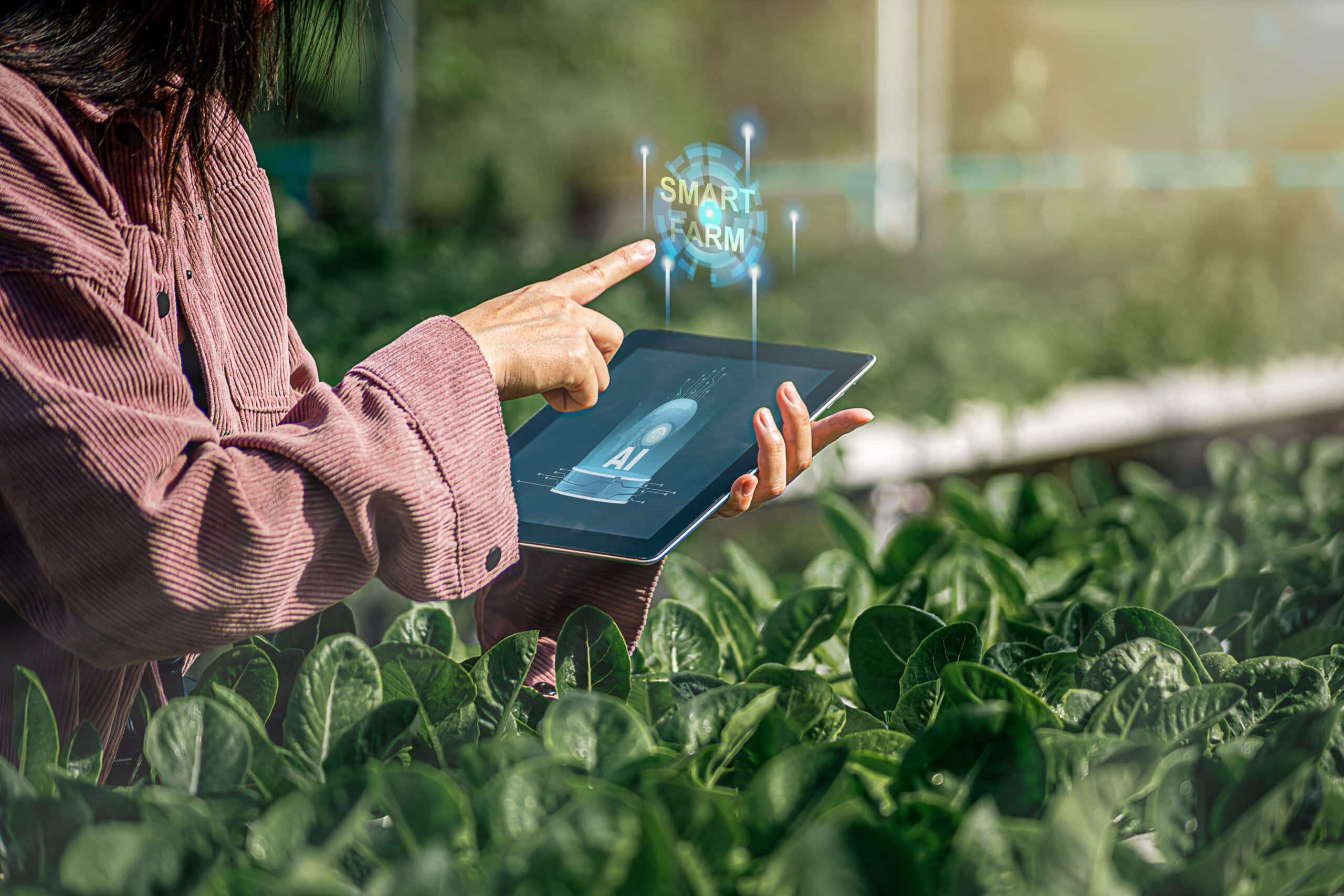Integrate Technology with Traditional Farming
Farming has been the backbone of human civilization for centuries. However, traditional farming methods face numerous challenges, such as climate change, soil degradation, and labor shortages.
How to Integrate Technology with Traditional Farming
To ensure sustainability and efficiency, integrating modern technology into traditional farming is no longer an option—it’s a necessity. But how can farmers embrace innovation without losing their time-tested agricultural practices? Let’s explore, “How to Integrate Technology with Traditional Farming“.
Understanding the Role of Integrate Technology with Traditional Farming
How Technology Enhances Productivity
Modern technology helps farmers maximize yield, reduce waste, and optimize resource usage. From AI-driven analytics to automated irrigation, tech solutions enable precision farming, ensuring better results with fewer inputs.
Balancing Tradition with Innovation
While technology offers numerous benefits, it’s essential to maintain a balance. Traditional knowledge, such as crop rotation and organic farming, can complement technological advancements, creating a sustainable agricultural ecosystem.
Smart Farming Techniques
Technology is revolutionizing the agricultural industry, making farming more efficient, productive, and sustainable. Smart farming techniques leverage precision agriculture, drones, and artificial intelligence to optimize crop yields, reduce resource wastage, and enhance decision-making.
Precision Agriculture
Precision agriculture involves using advanced technology to monitor and manage field variations, ensuring optimal crop growth while reducing input costs.
1. GPS Technology in Farming
Global Positioning System (GPS) technology plays a vital role in precision farming by helping farmers:
- Map their fields with high accuracy, ensuring even distribution of seeds and fertilizers.
- Track machinery movements, reducing fuel consumption and minimizing overlapping applications.
- Optimize irrigation by analyzing land elevation and soil moisture levels.
With GPS-enabled tractors and equipment, farmers can automate planting, fertilizing, and harvesting, improving efficiency and reducing labor costs.
2. IoT Sensors for Smart Farming
The Internet of Things (IoT) has introduced smart sensors that provide real-time data on soil conditions, weather patterns, and crop health.
- Soil sensors measure moisture, temperature, and nutrient levels, ensuring crops receive the right amount of water and fertilizer.
- Weather sensors predict climate changes, helping farmers take proactive measures to protect crops.
- Livestock monitoring devices track animal health, detecting diseases early and improving overall farm management.
By using IoT sensors, farmers can reduce water and fertilizer wastage, making agriculture more sustainable.
Drones in Agriculture
Drones are transforming modern farming by providing aerial insights that improve monitoring and decision-making.
1. Crop Monitoring with Drones
Drones equipped with high-resolution cameras and multispectral sensors can:
- Capture real-time images to detect disease outbreaks, pest infestations, and nutrient deficiencies early.
- Monitor crop health over large areas, saving time and reducing the need for manual field inspections.
- Create detailed 3D field maps, helping farmers optimize irrigation and fertilizer application.
With drone-based crop monitoring, farmers can prevent losses and maximize yields by addressing issues before they escalate.
2. Drones for Spraying Fertilizers and Pesticides
Drones can automate the spraying of fertilizers, pesticides, and herbicides, offering several advantages:
- Reduces manual labor, making farming more efficient and cost-effective.
- Ensures uniform application, preventing overuse or underuse of chemicals.
- Minimizes human exposure to harmful pesticides, improving safety for farm workers.
By using drones, farmers can increase precision, reduce chemical waste, and enhance crop protection.
AI and Machine Learning in Farming
Artificial Intelligence (AI) is transforming agriculture by analyzing vast amounts of data and providing predictive insights.
1. AI for Weather and Yield Predictions
AI-powered models use historical weather and soil data to:
- Predict rainfall, drought conditions, and temperature changes, helping farmers plan irrigation schedules.
- Estimate crop yields, allowing farmers to forecast profits and adjust market strategies.
- Detect patterns in plant growth, optimizing farming techniques for higher productivity.
With AI-driven weather and yield predictions, farmers can make data-backed decisions and minimize risks.
2. AI-Based Pest Control
Machine learning algorithms help farmers detect pests and diseases early, reducing crop damage.
- AI-powered image recognition systems analyze drone and satellite images to identify pest infestations.
- Automated pest monitoring systems send alerts when pest populations exceed safe levels, allowing timely intervention.
- Smart traps use AI to classify and count pests, reducing reliance on harmful chemical pesticides.
By integrating AI-based pest control, farmers can protect their crops while reducing chemical use and environmental impact.
Automation in Farming
Robotics and Automated Machinery
- Self-Driving Tractors: These autonomous machines reduce the need for human labor while improving efficiency.
- Automated Irrigation: Smart irrigation systems deliver water based on real-time soil moisture data.
Smart Greenhouses
Greenhouses equipped with IoT technology ensure optimal growing conditions.
- Automated Climate Control: Sensors adjust temperature and humidity based on crop requirements.
- Hydroponic and Aquaponic Systems: These soil-less farming techniques use smart monitoring for nutrient balance.
Digital Platforms for Farmers
Mobile Apps for Farm Management
Smartphone applications make farming more data-driven and efficient.
- Weather Tracking: Apps provide real-time updates to help farmers plan their activities.
- Market Price Monitoring: Farmers can get fair prices for their produce by tracking market trends.
Blockchain in Agriculture
Blockchain technology ensures transparency in the supply chain.
- Traceability: Consumers can verify the journey of their food from farm to table.
- Fair Trade: Blockchain records transactions, ensuring farmers receive fair compensation.
Sustainable and Eco-Friendly Tech Solutions
Solar-Powered Irrigation Systems
Solar energy reduces reliance on fossil fuels, making farming more eco-friendly.
- Cost-Effective: Once installed, solar-powered pumps significantly cut electricity costs.
- Reliable: Works even in remote areas with no power grid access.
Biotech Innovations
Biotechnology is helping farmers grow better crops with fewer chemicals.
- Genetically Modified Crops: Engineered to resist pests and harsh weather conditions.
- Organic Fertilizers and Bio-Pesticides: Enhance soil health without harming the environment.
Challenges in Integrate Technology with Traditional Farming
While integrating technology into agriculture offers significant benefits, several obstacles hinder its widespread adoption. The primary challenges include high costs, resistance to change, and lack of training.
1. High Cost of Implementation
One of the biggest barriers to adopting modern farming technology is the high upfront cost. Advanced machinery, smart irrigation systems, IoT sensors, and AI-powered analytics tools require a substantial investment.
- Small-scale farmers often struggle to afford these technologies due to limited financial resources.
- Even if a farmer takes a loan or government subsidy, the long-term maintenance costs can be another financial burden.
- Many developing regions lack access to affordable financing options, making it difficult for farmers to invest in smart farming solutions.
However, solutions like government grants, cooperative purchasing, and leasing models are helping reduce this financial burden for farmers.
2. Resistance to Change Among Traditional Farmers
Many farmers rely on time-tested, conventional farming methods passed down through generations. This makes them skeptical of modern technology.
- Some believe that manual techniques are more reliable than automated systems.
- There is fear of dependency on technology, especially in areas with unreliable power or internet connectivity.
- Farmers may also worry about job displacement, as automation reduces the need for human labor.
To overcome this, demonstrations, pilot projects, and farmer awareness programs can showcase the benefits of technology and encourage adoption.
3. Lack of Training and Technical Knowledge
Technology-driven farming requires specialized knowledge and skills. However, many farmers, especially in rural and underdeveloped areas, lack the necessary education to use modern equipment and software.
- Smart irrigation systems, drones, and AI-based analytics require technical expertise that many farmers are unfamiliar with.
- Without proper training, farmers may misuse these technologies, leading to inefficient results or even financial losses.
- Limited access to internet and digital resources further restricts farmers from learning about and adopting new techniques.
Governments, agricultural institutions, and private organizations must invest in training programs, workshops, and digital literacy campaigns to help farmers transition smoothly into tech-integrated agriculture.
Future of Integrate Technology with Traditional Farming
The future of farming is set to be revolutionized by emerging technologies like 5G connectivity, vertical farming, and urban agriculture. These advancements will enhance productivity, sustainability, and food security.
1. Role of 5G in Smart Farming
The introduction of 5G networks will transform the agricultural industry by enabling faster, real-time data processing and communication between smart farming devices.
- Precision agriculture will improve, as IoT sensors can transmit live soil, weather, and crop health data to farmers in real time.
- Drones and automated machinery will function more efficiently, reducing delays caused by slow data transfer.
- Farmers will be able to monitor and control irrigation systems, greenhouse conditions, and livestock health remotely using high-speed connectivity.
5G will make smart farming more efficient, reliable, and accessible, even in remote locations.
2. Vertical Farming: Growing Food in Urban Areas
Vertical farming is an innovative approach where crops are grown in stacked layers using controlled environments instead of traditional open fields.
- Uses hydroponics, aeroponics, and LED lighting to provide optimal growth conditions.
- Requires less land and water compared to conventional farming.
- Can be integrated into urban buildings, warehouses, and abandoned spaces, reducing the need for transporting food from rural farms.
With rising global population and decreasing agricultural land, vertical farming can help cities become more self-sufficient in food production.
3. Urban Agriculture: Bringing Farms to the City
Urban agriculture refers to small-scale farming within city environments, including rooftop gardens, community farms, and indoor greenhouses.
- Helps cities reduce food transportation costs and minimize carbon footprints.
- Provides fresh, locally grown produce to urban populations.
- Can be integrated with renewable energy sources like solar panels, making it environmentally friendly.
Urban agriculture and smart farming technologies will play a crucial role in addressing food security issues in the future.
Conclusion
Integrate Technology with Traditional Farming is reshaping agriculture, making it more sustainable and productive. While traditional methods have their place, integrating smart solutions like AI, drones, and IoT can help farmers overcome challenges and increase efficiency. The future of farming lies in the perfect blend of old wisdom and modern innovation.

FAQs
1. How does technology help farmers increase productivity?
Technology optimizes resource use, reduces waste, and enhances efficiency through automation and data-driven decision-making.
2. What is precision agriculture, and how does it work?
Precision agriculture uses GPS, IoT sensors, and AI to monitor crops, soil, and weather, allowing farmers to apply resources more effectively.
3. Can small farmers afford advanced farming technology?
Yes! Many affordable solutions, like mobile apps, small-scale automation, and government subsidies, help small farmers adopt technology.
4. How does blockchain improve food traceability?
Blockchain records every step of the supply chain, ensuring transparency and allowing consumers to track food origins.
5. What are the environmental benefits of tech-integrated farming?
It reduces water usage, lowers chemical dependency, and minimizes waste, making farming more sustainable.





